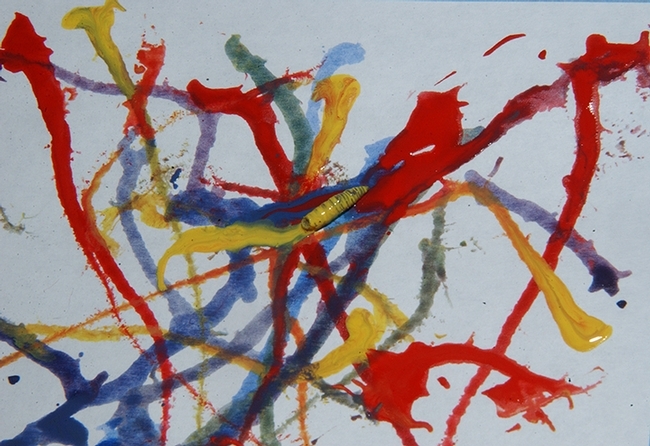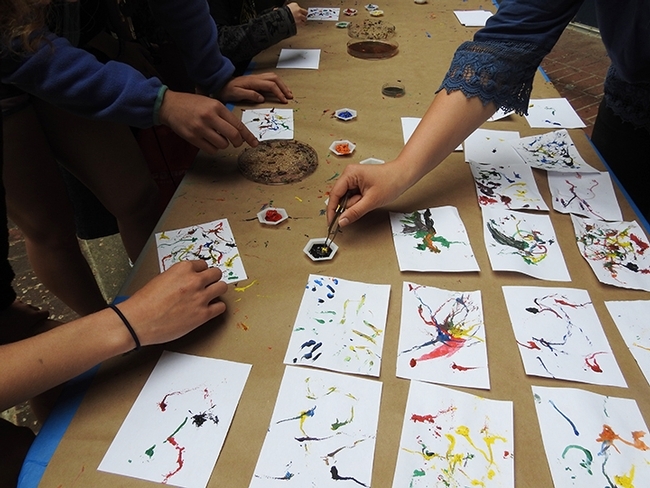- Author: Kathy Keatley Garvey
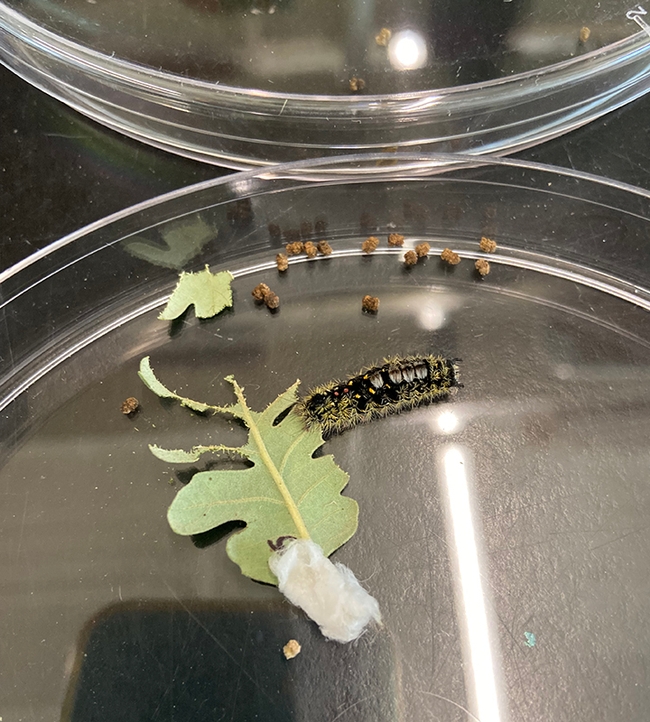
The article, “Vehicle Pollution Is Associated with Elevated Insect Damage to Street Trees,” is published in the Journal of Applied Ecology. It received the Editor's Choice Award.
“This research reveals strong effects of vehicle pollution on insect damage to trees,” said Meineke, who conceived the idea for the project, funded by the department. “Trees next to highways are exposed to multiple stressors, including urban heat, pollution, and insects, all of which affect one another and tree health. Our research strongly suggests planting trees that are less susceptible to herbivory near highways.”
Her team included her colleague, UC Davis distinguished professor Richard “Rick” Karban, who co-wrote the manuscript, and junior specialist David Eng, then of the Meineke lab. The study targeted vehicle pollution in the Sacramento Valley “and adds to a now growing chorus of studies demonstrating the scientific value of intra-urban gradients of particular variables (heat, pollution, surrounding vegetation),” they wrote.
They suspect that “vehicle pollution depresses defensive pathways within trees and reduces the concentrations of key compounds that protect against herbivore damage.”

The researchers demonstrated that leaf damage to a native oak species (Quercus lobata), known as the valley oak,” is “substantially elevated on trees exposed to vehicle emissions.”
“Together, our studies demonstrate that the heterogeneity in vehicle emissions across cities may explain highly variable patterns of insect herbivory on street trees,” they wrote. “Our results also indicate that trees next to highways are particularly vulnerable to multiple stressors, including insect damage. To combat these effects, urban foresters may consider installing trees that are less susceptible to insect herbivory along heavily traveled roadways.”
The valley oak is a deciduous, long-lived tree that can reach up to 98 feet in height and live up to 600 years. It is known to tolerate wildfires.

“Past studies hint at the potential role of vehicle pollution as a driver of leaf nutritional quality for chewing herbivores. At one site in the United Kingdom, trees within 100 meters of motorways were much more likely to be severely defoliated than trees at further distances. Elevated herbivory was attributed to elevated nitrogen dioxide (NO2) along highways.” Another study in the Los Angeles Basin, showed that “herbivore communities on oak trees at more polluted natural areas tended to be more dominated by chewing herbivores compared to less polluted natural areas.”
The UC Davis researchers wrote that their results “demonstrate that highly polluted, highway-adjacent habitats are associated with shifts in plant-insect interactions and that this topic may be ripe for future research into how roadside environments may affect insect conservation and plant performance in cities.”
Their study highlights the importance of planting decisions along major roadways. “The concept of ‘right tree, right place' has long stated that tree selection should be aimed at maximizing the performance in urban areas,” they wrote. “Quercus lobata and other species that are highly susceptible to herbivores may provide ecosystem services sub-optimally along highways, and may have shorter lifespans due to chronic damage promoted by on-road pollution trees.”
“Identifying tree species that are robust to pollution, and resistant to insects that may benefit from pollution, could be a novel consideration in planting decisions. This consideration may become even more important as many cities become drier and hotter, and insect herbivores have disproportionate impacts on tree growth. Because city-owned trees are planted and cannot themselves evolve in response to climate change, we may be required to develop new cultivars to promote robust trees along roadways.”
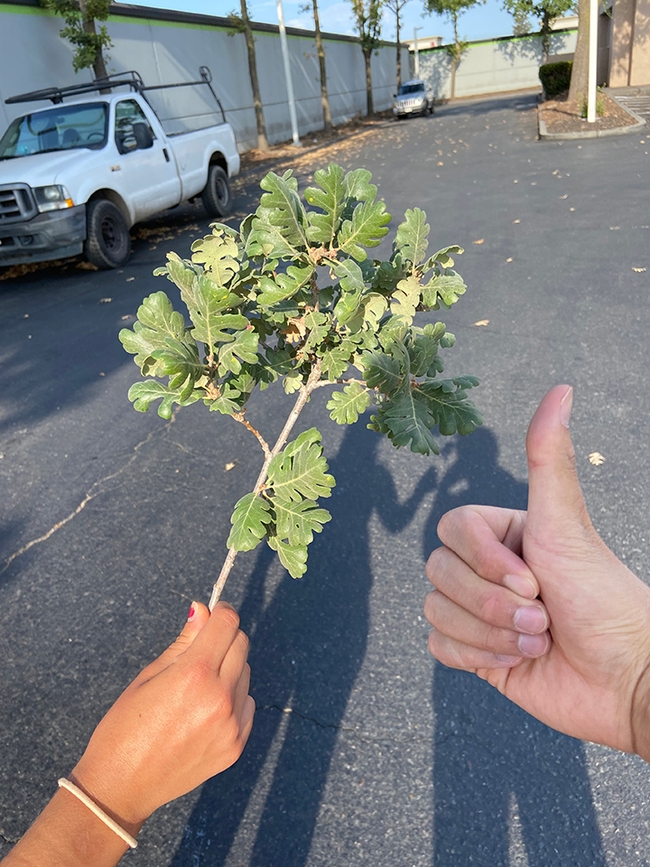
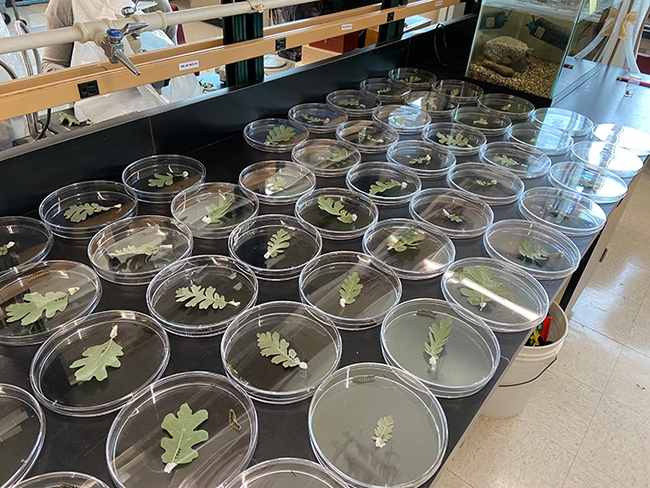
- Author: Kathy Keatley Garvey

His topic is "Insularity Effects on Plant-Herbivore Interactions: Searching for Biotic and Abiotic Explanatory Variables to Promote Insular Biodiversity Conservation." The Zoom link:
https://ucdavis.zoom.us/j/95882849672.
UC Davis distinguished professor Richard "Rick" Karban, an international authority on plant-insect communications, is the host.
"For more than six decades, ecologists have hypothesized that insular plant taxa suffer lower levels of
herbivory by insects and mammals, and consequently they have evolved lower defenses or even lost them completely," Moreira says in his abstract. "Although initially this theory was unanimously accepted, recent island-mainland comparisons have shed mixed findings, causing a current vivid debate about insularity effects on plant-herbivore interactions. Inconsistency in patterns reported thus far is basically because studies remain limited in scope both geographically and taxonomically and do not usually consider the multi-trophic context in which plant-herbivore interactions are immersed."
"In this seminar, I will talk about the knowledge gaps and research opportunities on this topic. In particular, further studies should include (1) a broader geographical extent of island-mainland comparisons with site replication within each system and multiple systems (at both regional and global scales), (2) a more comprehensive and integrative assessment of plant defensive phenotypes (multiple traits and their co-expression patterns), (3) measurements ofherbivory by vertebrate and invertebrate herbivores species and guilds, and (4) a consideration of multi-trophic context in which plant-herbivore interactions are embedded, namely how predators and parasitoids respond to insularity and their relative influence on mainland vs. island herbivory and plant defenses." (See more information on his website at https://plantherbivory.weebly.com.)
"Dr. Moreira has done work on various aspects of plant defenses against herbivores," Karban said. "He is best known for papers about the costs of defense, the effects of variable host plants on herbivores and their natural enemies, elevational and latitudinal variation in herbivory, and plant communication that affects herbivory."
Moreira holds a bachelor's degree (2005) in forestry from the University of Santiago and received both his master's degree (2007) and doctorate (2010) from the University of Vigo, Spain. Moreira, who joined the Biological Mission of Galicia in 2015, has served as a senior researcher there since 2021. He was a Fulbright postdoctoral researcher from 2012 to 2014 in the UC Irvine Department of Ecology and Evolutionary Biology.
Emily Meineke, assistant professor of urban landscape entomology, UC Davis Department of Entomology and Nematology, coordinates the department's seminars for the 2022-23 academic year. All 11 seminars will take place both person and virtually at 4:10 p.m. on Wednesdays in Room 122 of Briggs Hall except for the Nov. 9th and Dec. 7th seminars, which will be virtual only, she said. (See list of seminars)
For further information on the seminars or to resolve any technical difficulties with Zoom, contact Meineke at ekmeineke@ucdavis.edu.
- Author: Kathy Keatley Garvey

Yes, if you use the term “personality” to refer to “intraspecific expression of behaviors that are stable over time and consistent across different situations,” says ecologist Richard “Rick” Karban, an international authority on plant communications and a distinguished professor in the UC Davis Department of Entomology and Nematology.
“Individual plants respond differently to alarm calls, just as individual animals do,” says Karban, a 40-year member of the UC Davis faculty who has studied plant communication in sagebrush (Artemisia tridentata) since 1995 on his research site, located east of the Sierra Nevada mountain range.
In a newly published paper in the international peer-reviewed journal, Oecoogia, the UC Davis professor and two colleagues found that when plants tell their neighbors—via volatile cues—that they are under attack by herbivores, the plants showed consistent individual variation in how they perceived and responded to the cues, that is, how effectively they shored up their defenses.
“The gist of the argument here is that animal behaviorists have found it useful to recognize that individual animals show behavioral tendencies that are consistent under different circumstances and repeatable over time,” Karban explained. “So, for instance, some individuals are bolder or shyer in terms of issuing or responding to alarm calls. They have termed these individual tendencies 'personalities.' We have found similar consistent individual differences among sagebrush plants.”
The paper, titled “Consistent Individual Variation in Plant Communication: Do Plants Have Personalities?,” is co-authored by Patrick Grof-Tisza of the University of Eastern Finland and Charline Couchoux of the University of Quebec. Established in 1968, Oecoogia is one of the most cited ecology journals.
“Just as animal biologists have come to consider consistent individual personalities to be an important factor in shaping animal phenotypes, behaviors, and interactions, so, too, should plant biologists include individual variation in plant communication as a significant individual attribute that influences their evolution and ecology,” they noted.
In their abstract, they explained that “When animals sense danger, some individuals will alert neighbors with alarm calls and both calling and responding vary consistently among individuals. Plants, including sagebrush, emit volatile cues when they are attacked by herbivores and neighbors perceive these cues and reduce their own damage.”
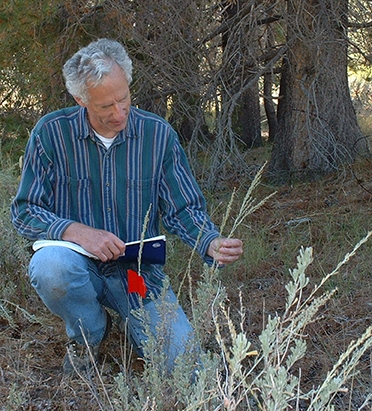
They found that 5 percent of the variance in chewing damage “was attributable to the identity of the emitter that provided the cue. This fraction of variation was statistically significant and could not be attributed to the environmental conditions of the receiver. Effective receivers were also relatively effective emitters, indicating consistency across different situations. Pairs of receivers and emitters that were effective communicators in 2018 were again relatively effective in 2019, indicating consistency over time. These results suggest that plants have repeatable individual personalities with respect to alarm calls.”
In their paper, the scientists pointed out that the goal “in discussing plant personalities is not to insinuate that plants are people or are intelligent in a similar way that we are, but to highlight that animal behavior has much to offer the development of plant biology. Recognizing that plants exhibit consistent behaviors that are repeatable in different situations and stable over time (i.e., personalities) has several important consequences.”
First, they said most plant biologists focus on treatment groups instead of individuals. “The idea that individual plants may show consistent tendencies that can be quantified, independent of other treatments, leads to a different research focus. In addition, the existence of plant personalities means that knowledge of an individual's past provides information that can predict its behavior in the future. In Bayesian jargon, the existence of personalities means that informed priors can be used to improve predictive power.”
Tradeoffs. Second, they wrote, “recognition of correlations among different plant behaviors suggests that there may be tradeoffs among important traits that are not independent of one another. For example, a negative correlation between growth of roots and shoots suggests an allocation tradeoff between above and below ground tissues while a positive correlation between growth of roots and shoots suggests that differential access to resources is more important than such an allocation tradeoff. Life-history tradeoffs of this nature are familiar to evolutionary plant biologists and this framework can be applied to other plant behaviors.”
Third, they wrote, “alarm calls that affect herbivory influence plant growth, survival, and reproduction in the few systems where they have been studied. These demographic effects have the potential to shape plant adaptations, population sizes and distributions, ability to respond to natural and human induced changes, and interactions with other species, although potential effects of variation in plant communication have been largely neglected.”
The trio pointed out that “many of these volatile chemicals dissipate rapidly so that they are present in biologically active concentrations over relatively short distances (often less than 1 m). In many instances, cues may be emitted unintentionally, and this process is probably best described as eavesdropping by the receiving plant. These same plant volatile cues have been found to serve other functions in some instances such as repelling herbivores and attracting the predators and parasites of the herbivores.”
Landmark Book. Karban is the author of the landmark book, Plant Sensing and Communication (University of Chicago Press, 2015). He is a fellow of the Ecological Society of America (ESA) and the American Association for the Advancement of Science, and the recipient of the 1990 George Mercer Award from ESA for outstanding research.
The UC Davis ecologist is featured in the Dec. 23-30, 2013 edition of The New Yorker in Michael Pollan's piece, The Intelligent Plant: Scientists Debate a New Way of Understanding Plants. Zoe Schlanger featured him in a Nov. 21, 2020 Bloomberg Quint article titled The Botanist Daring to Ask: Do Plants Have Personalities?
Karban, who holds a doctorate in biology from the University of Pennsylvania, Philadelphia, joined the UC Davis faculty in 1982.
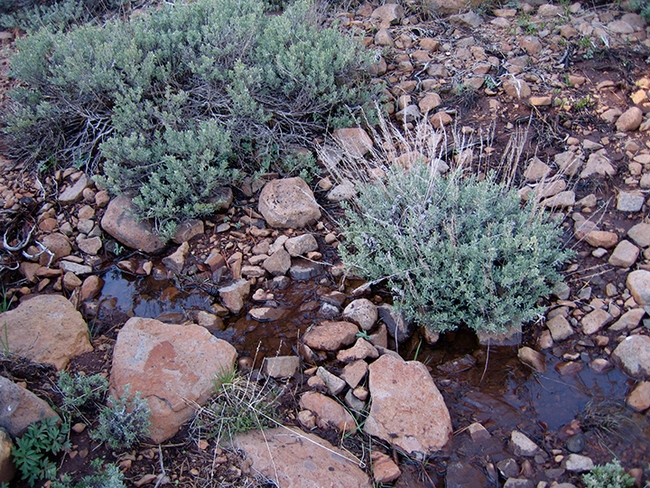
- Author: Kathy Keatley Garvey
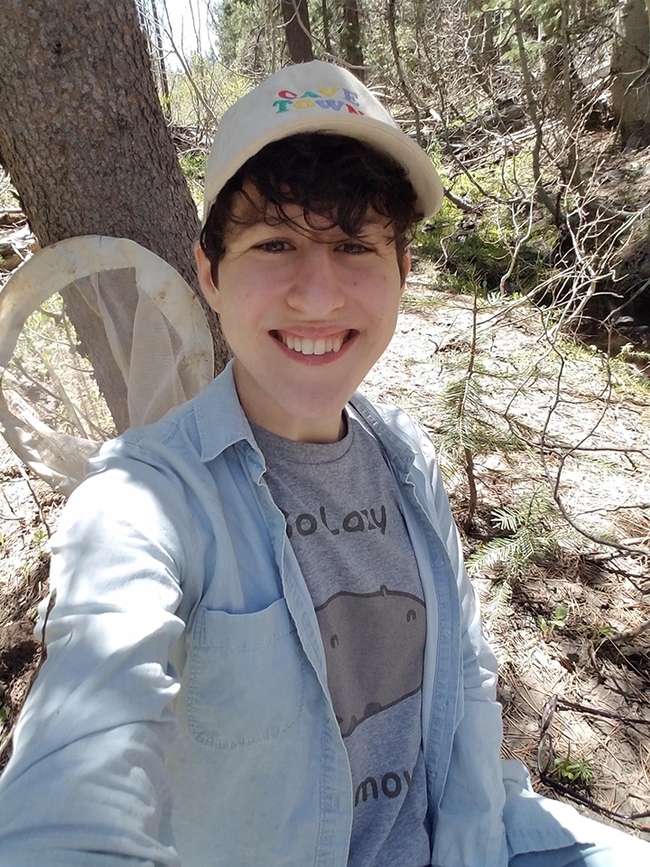
Yes, according to UC Davis community ecologist and doctoral candidate Danielle Rutkowski and her colleagues in their newly published research in the Royal Entomological Society's Journal of Ecological Entomology.
The research, “Bee-Associated Fungi Mediate Effects of Fungicides on Bumble Bees,” provides direct evidence that fungi can benefit both survival and reproduction in two species of bumble bees, Bombus vosnesenskii, and B. impatiens. The research also suggests that yeast, commonly found in the gut of bumble bees, may be more important than originally thought.
“Bumble bees are important pollinators that face threats from multiple sources, including agrochemical application,” said Rutkowsi, the lead researcher-author. “Declining bumble bee populations have been linked to fungicide application, which could directly affect the fungi often found in the stored food and gastrointestinal (GI) tract of healthy bumble bees.”
“I tested if fungicides commonly applied in orchard systems affected yeasts and the health of their bee hosts, and if feeding those bees their fungi after fungicide exposure could rescue them,” said Rutkowski, who studies with major professors Rachel Vannette and Richard Karban, community ecologists in the Department of Entomology and Nematology.
“Bombus vosnesenskii (commonly known as the yellow-faced bumble bee), is native to California and we reared colonies of it from wild-caught queens,” Rutkowski said. “In this species, we observed strong negative effects of fungicide and the ability of bee-associated fungi to rescue bees from these negative effects. The other species, Bombus impatiens, is native to the eastern United States, but is commonly produced and sold commercially for pollination. In this species, we did not find any negative impacts of fungicide, but the addition of yeasts was very beneficial for bee survival and offspring production.”
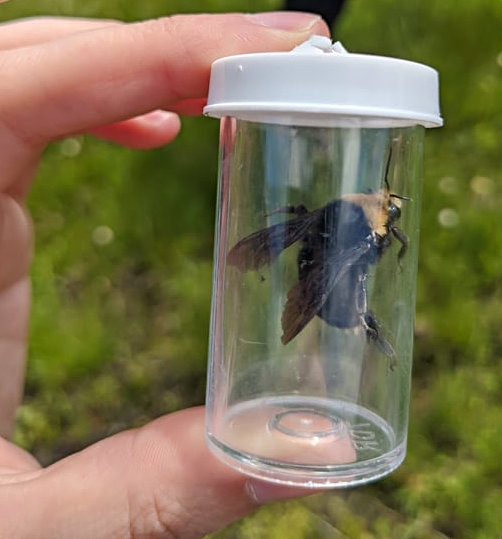
“Although most previous work on bee microbiomes has focused on bacteria and their role in bee health, Danielle's work suggests that yeasts --which are commonly found in association with bumble bees--may be more important than previously thought,” Vannette said. “This has been hinted at in the literature but rarely tested directly.”
Rutkowski examined the interactive effects of the fungicide propiconazole and fungal supplementation on the survival, reproduction and microbiome composition of microcolonies (queenless colonies) using the two species.
Both B. vosnesenskii and B. impatiens benefitted from fungal addition but in different ways. fungicide exposure decreased survival in B. vosnesenskii, while fungal supplementation mitigated fungicide effects. For B. impatiens, fungicide application had no effect, but fungal supplementation improved survival and offspring production.

“Because the effect of fungicides on yeasts and bees takes a few weeks to observe, it is not detected in short term LD50 trials,” Vannette said, “and therefore could be an unrecognized threat to bumble bees and their symbionts.”
Other co-authors of the paper are entomologist Eliza Litsey and environmental scientist Isabelle Maalouf.
More research is planned to determine the mechanism by which yeasts can affect bee health, and which fungicides affect bee-associated yeasts.
“I'm currently working on a project to determine the mechanisms behind the positive effects of yeast addition that we observed,” Rutkowski said. “In some bees and other insects, fungi can produce nutritionally important compounds for their host, and I'm currently trying to determine if this is the case for bumble bees as well.”
“Additionally, I'm planning on following up some of the interesting results on differences between bumble bee species by determining how associated microbial communities differ between wild and commercially-reared bumble bees,” Rutkowski said. “In this current paper, we found that the fungal communities associated with the commercially-sourced bees were less diverse and less abundant, and I'm hoping to determine if that's a common pattern.”
Rutkowski, who joined the UC Davis doctoral program in 2018, won the President's Prize (first-place) in her category for her graduate student research presentations at the 2017 and 2021 Entomological Society of America meetings. A 2018 graduate of Cornell University, summa cum laude, she holds a bachelor of science degree in entomology and biological sciences, with a concentration in ecology and evolution.
Rutkowski's research drew support from her three-year USDA National Institute of Food and Agriculture grant.
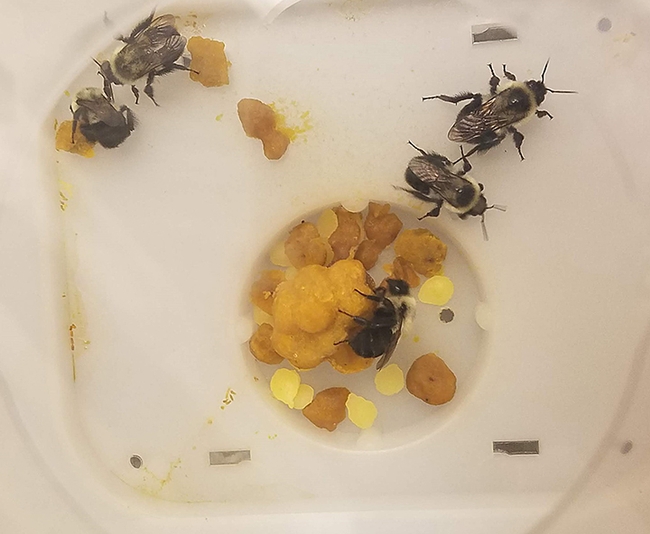
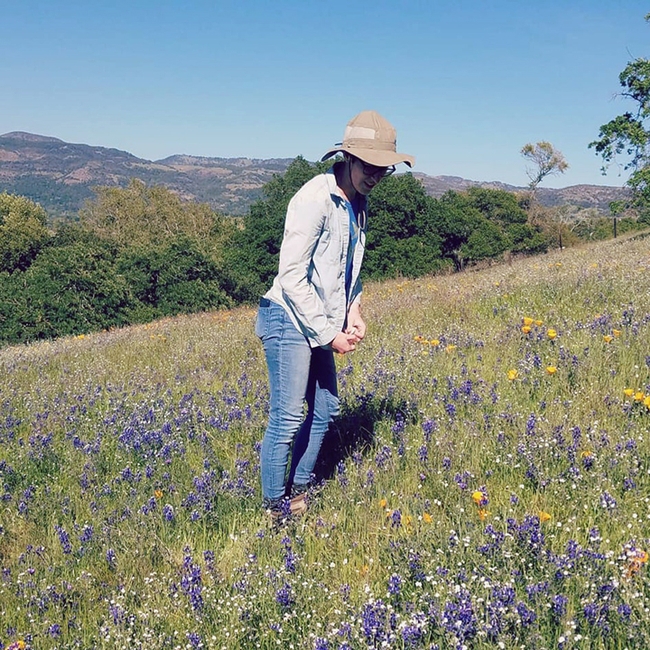
- Author: Kathy Keatley Garvey
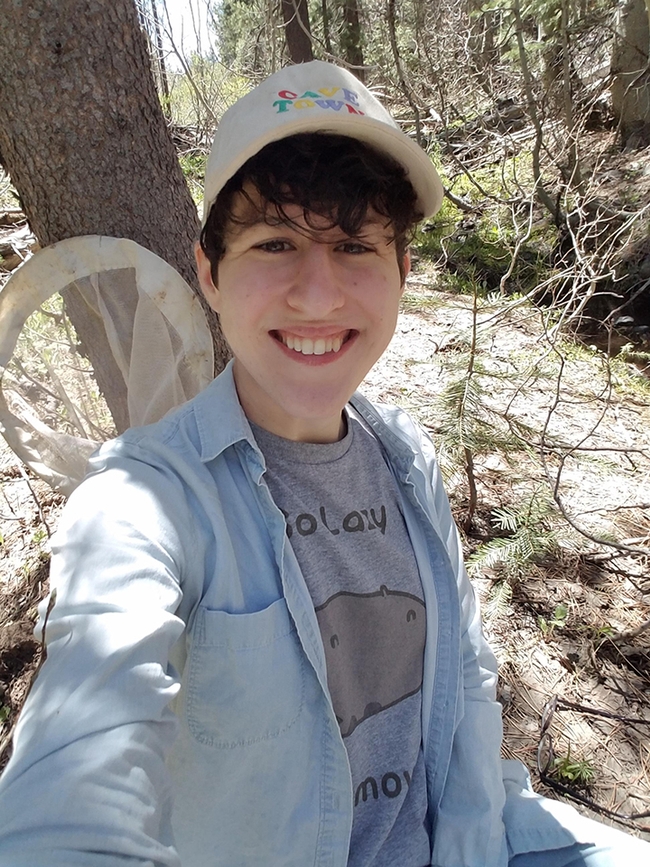
Squirm, maggots, squirm!
If you look behind the scenes of the entomological activities at the 108th annual UC Davis Picnic Day on Saturday, April 23 at Briggs Hall, you'll see a Department of Entomology and Nematology doctoral candidate coordinating everything from Roach Races to Maggot Art.
“I'm really excited to get our events up and running again after two years," said Danielle Rutkowski, the UC Davis Graduate Student Association (EGSA) coordinator of the department's Picnic Day activities at Briggs Hall (with forensic entomologist and faculty member Robert Kimsey).
COVID-19 pandemic cancelled the in-person UC Davis Picnic Day in both 2020 and 2021, but not 2022, nor the renewed enthusiasm.
“Coordinating events has been challenging, mostly because I've only been to one in-person Picnic Day myself!" said Rutkowski, who enrolled in the doctoral program in 2018, and is advised by associate professor Rachel Vannette and UC Davis distinguished professor Richard Karban.
"But it's been fun to work with other graduate students and the entomology club to get our exhibits from previous years back together. This is the first Picnic Day for many students in the department, so I want to make sure it's a fun experience for volunteers as well as visitors.”
Entomological activities at Briggs Hall will include Bug Doctor and Doctor Death booths; displays featuring honey bees, ants, mosquitoes, integrated pest management, forest entomology, medical entomology and agricultural entomology; and EGSA's insect-themed t-shirt sales, as well as the crowd-pleasing Roach Races and Maggot Art. And more. (See schedule at Briggs and Bohart Museum of Entomology.)
“The Roach Races are a definite favorite of the public; they're really high energy and a lot of fun," Rutkowski said. "And the (American) roaches are from a colony that the entomology club cares for, so they can return home after a hard day of racing. Maggot Art is another popular event among visitors, and we order the maggots from a bait supplier.”
Rutkowski says there are plenty of events “that I haven't seen before, and I'm looking forward to being a part of them this year. We'll have a lot of displays set up in Briggs 122, which I'm excited to see. We'll be bringing back some previous displays on forest entomology and medical entomology, as well as some new displays on agricultural entomology and caterpillar biology.”
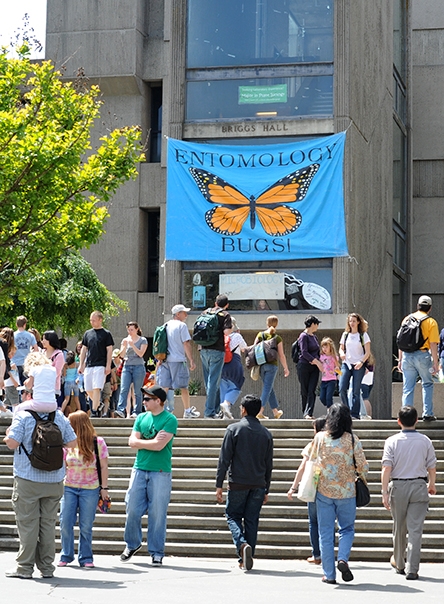
Her research is funded by a three-year USDA National Institute of Food and Agriculture (NIFA) pre-doctoral fellowship of $180,000; it provides tuition stipends and research funding to study the impacts and mechanisms of fungicide and bee-associated fungi on bumble bee health. Her other grants or scholarships include a 2020 Academic Senate grant of $25,000 to research the effects of fungicide on the health and microbiome composition of bumble bees; three George H. Vansell Scholarships (2019, 2020 and 2021 totaling $8950) to study the effects of fungicide on the health and microbiome composition of bumble bees; and a 2018-2020 UC Davis Eugene Cota-Robles Fellowship of $95,200.
Danielle holds a bachelor of science degree from Cornell University in entomology and biological sciences, with a concentration in ecology and evolutionary biology. She graduated in May 2018 summa cum laude with distinction in research.
At Cornell, Rutkowski did independent research with Professor Jennifer Thaler, carrying out an independent honor's thesis research project on ecological interactions between insect herbivores, plants, and arbuscular mycorrhizal fungi. Rutkowski also worked with Thaler on numerous other projects, studying interactions between potato plants, Colorado potato beetles, and their predators, as well as projects studying the interactions between arbuscular mycorrhizal fungi, tomato plants, and insect herbivores. She also worked with Professor Richard Lindroth at the University of Wisconsin, Madison, investigating how genotype and environmental conditions interact to affect the growth, defense and insect community of aspen trees.
Active in the Entomological Society of America (ESA), Rutkowski presented her research at the annual meetings in 2017, 2018 and 2021, and received the President's Prize (first place) in both 2017 and 2021. Rutkowski has also served as a member of the UC Davis graduate student group, Equity in Science, Technology, Engineering, Math, and Entrepreneurship (ESTEME), planning activities and lessons for middle school students in the Davis area.
But for now, Danielle Rutkowski is juggling (1) her research on bumble bees (2) her dedication to her academic studies and (3) her mentoring and student teaching with (4) her commitment to public service: coordinating the highly popular Roach Races, Maggot Art and other entomological activities at the UC Davis Picnic Day's campuswide open house.
